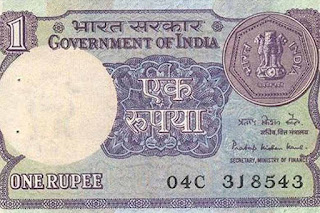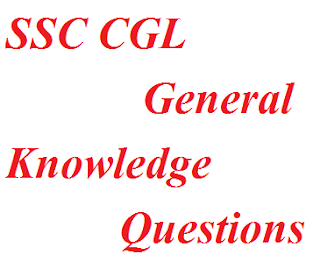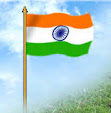SSC CGL EXAM 2016 Tier - 2 Syllabus
Indicative Syllabus for Tier-II of the Examination:
Paper-I : Quantitative Ability :
The questions will be designed to test the ability of appropriate use of
numbers and number sense of the candidate. The scope of the test will be the computation of
whole numbers, decimals ,fractions and relationships between numbers, Percentage. Ratio &
Proportion,Square roots, Averages, Interest, Profit and Loss, Discount, Partnership Business,
Mixture and Alligation, Time and distance, Time & Work, Basic algebraic identities of School
Algebra & Elementary surds, Graphs of Linear Equations, Triangle and its various kinds of
centres, Congruence and similarity of triangles, Circle and its chords, tangents, angles
subtended by chords of a circle, common tangents to two or more circles, Triangle,
Quadrilaterals, Regular Polygons , Circle, Right Prism, Right Circular Cone, Right Circular
Cylinder, Sphere, Hemispheres, Rectangular Parallelepiped, Regular Right Pyramid with
triangular or square base, Trigonometric ratio, Degree and Radian Measures, Standard
Identities, Complementary angles, Heights and Distances, Histogram, Frequency polygon, Bar
diagram & Pie chart
Paper-II : English Language & Comprehsion:
Questions in this components will be designed to
test the candidate’s understanding and knowledge of English Language and will be based on
spot the error, fill in the blanks, synonyms, antonyms, spelling/detecting mis-spelt words,
idioms & phrases, one word substitution, improvement of sentences, active/passive voice of
verbs, conversion into direct/indirect narration, shuffling of sentence parts, shuffling of
sentences in a passage, cloze passage & comprehension passage.
Paper-III : Statistics for Investigator Grade-II, Ministry of Statistics & Programme Implementation &
Compiler in RGI.
Collection Classification and Presentation of Statistical Data – Primary and Secondary
data, Methods of data collection; Tabulation of data; Graphs and charts; Frequency
distributions; Diagrammatic presentation of frequency distributions.
Measures of Central Tendency- Common measures of central tendency – mean median and
mode; Partition values- quartiles, deciles, percentiles.
Measures of Dispersion- Common measures dispersion – range, quartile deviations, mean
deviation and standard deviation; Measures of relative dispersion.
Moments, Skewness and Kurtosis – Different types of moments and their relationship;
meaning of skewness and kurtosis; different measures of skewness and kurtosis.
Correlation and Regression – Scatter diagram; simple correlation coefficient; simple
regression lines; Spearman’s rank correlation; Measures of association of attributes; Multiple
regression; Multiple and partial correlation (For three variables only).
Probability Theory – Meaning of probability; Different definitions of probability; Conditional
probability; Compound probability; Independent events; Bayes’ theorem.
Random Variable and Probability Distributions – Random variable; Probability functions;
Expectation and Variance of a random variable; Higher moments of a random variable;
Binomial , Poisson, Normal and Exponential distributions; Joint distribution of two random
variable (discrete).
Sampling Theory – Concept of population and sample; Parameter and statistic, Sampling
and non-sampling errors; Probability and non-probability sampling techniques(simple random
sampling, stratified sampling, multistage sampling, multiphase sampling, cluster sampling,
systematic sampling, purposive sampling, convenience sampling and quota sampling);
Sampling distribution(statement only); Sample size decisions.
18
Statistical Inference - Point estimation and interval estimation, Properties of a good
estimator, Methods of estimation (Moments method, Maximum likelihood method, Least
squares method), Testing of hypothesis, Basic concept of testing, Small sample and large
sample tests, Tests based on Z, t, Chi-square and F statistic, Confidence intervals.
Analysis of Variance - Analysis of one-way classified data and two-way classified data.
Time Series Analysis - Components of time series, Determinations of trend component by
different methods, Measurement of seasonal variation by different methods.
Index Numbers - Meaning of Index Numbers, Problems in the construction of index
numbers, Types of index number, Different formulae, Base shifting and splicing of index
numbers, Cost of living Index Numbers, Uses of Index Numbers.
NOTE-I : Questions in Paper-I will be of 10th standard level, Paper-II of 10+2 level and Paper-III of
graduation level.
NOTE- II: The Commission will have full discretion to fix separate minimum qualifying marks
in each of the papers in Tier II and in the aggregate of all the papers separately for each
category of candidates (viz. SC/ST/OBC /PH/ExS/General (UR) Only those candidates who
qualify in all the papers as well as in the aggregate would be eligible to be considered for being
called for Interview and/or Skill Test.
There will be different set of Questions for Visually Handicapped (VH) candidates in
Paper-I-Quantitative Ability, which shall not have any component of Map/Graphs/Statistical
Data/ Diagrams/Figures/Geometrical problems/Pie-chart etc. However, components of other
papers will be the same as that for general candidates.
NOTE-III: Any representation to key of the examination will be scrutinized with the help of
experts, wherever necessary, and evaluation in that case will be done with modified answer
key. The decision of the Commission in this regard will be final and no further representation
will be entertained.
People are also reading








